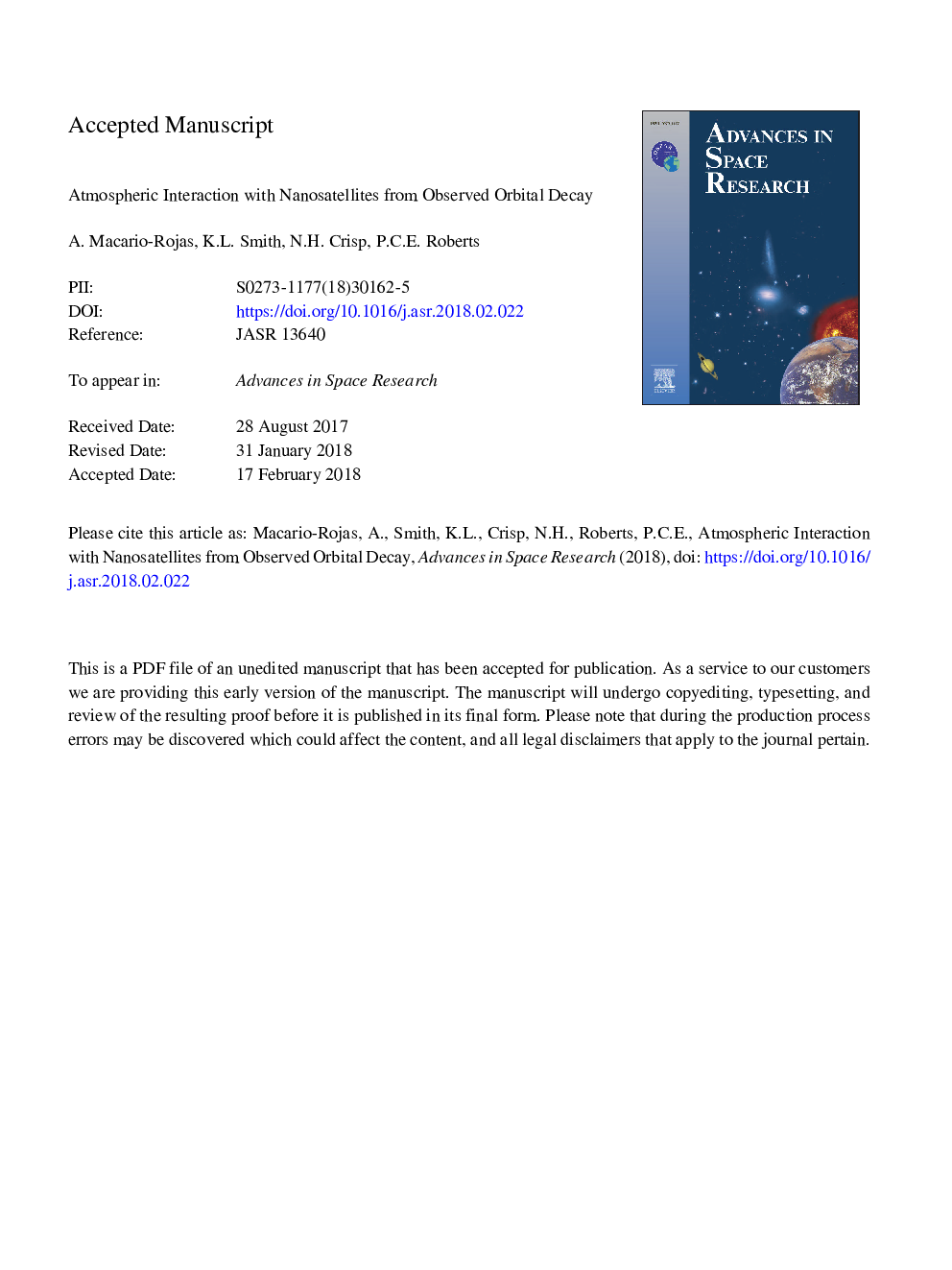| Article ID | Journal | Published Year | Pages | File Type |
|---|---|---|---|---|
| 8131857 | Advances in Space Research | 2018 | 12 Pages |
Abstract
Nanosatellites have gained considerable presence in low Earth orbits wherein the atmospheric interaction with exposed surfaces plays a fundamental role in the evolution of motion. These aspects become relevant with the increasing applicability of nanosatellites to a broader range of missions objectives. This investigation sets out to determine distinctive drag coefficient development and attributes of atmospheric gas-surface interactions in nanosatellites in the common form of standard 3U CubeSats from observed orbital decay. As orbital decay can be measured with relative accuracy, and its mechanism broken down into its constituent sources, the value of drag-related coefficients can be inferred by fitting modelled orbit predictions to observed data wherein the coefficient of interest is the adjusted parameter. The analysis uses the data of ten historical missions with documented passive attitude stabilisation strategies to reduce uncertainties. Findings indicate that it is possible to estimate fitted drag coefficients in CubeSats with physical representativeness. Assessment of atomic oxygen surface coverage derived from the fitted drag coefficients is broadly consistent with theoretical trends. The proposed methodology opens the possibility to assess atmospheric interaction characteristics by using the unprecedented opportunity arising from the numerous observed orbital decay of nanosatellites.
Keywords
Related Topics
Physical Sciences and Engineering
Earth and Planetary Sciences
Space and Planetary Science
Authors
A. Macario-Rojas, K.L. Smith, N.H. Crisp, P.C.E. Roberts,
